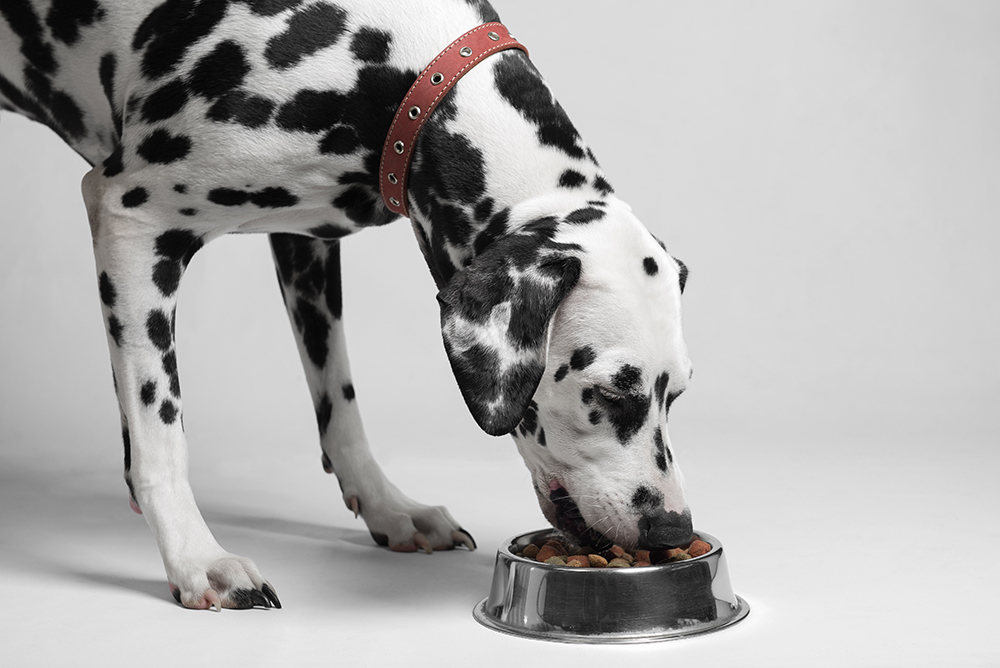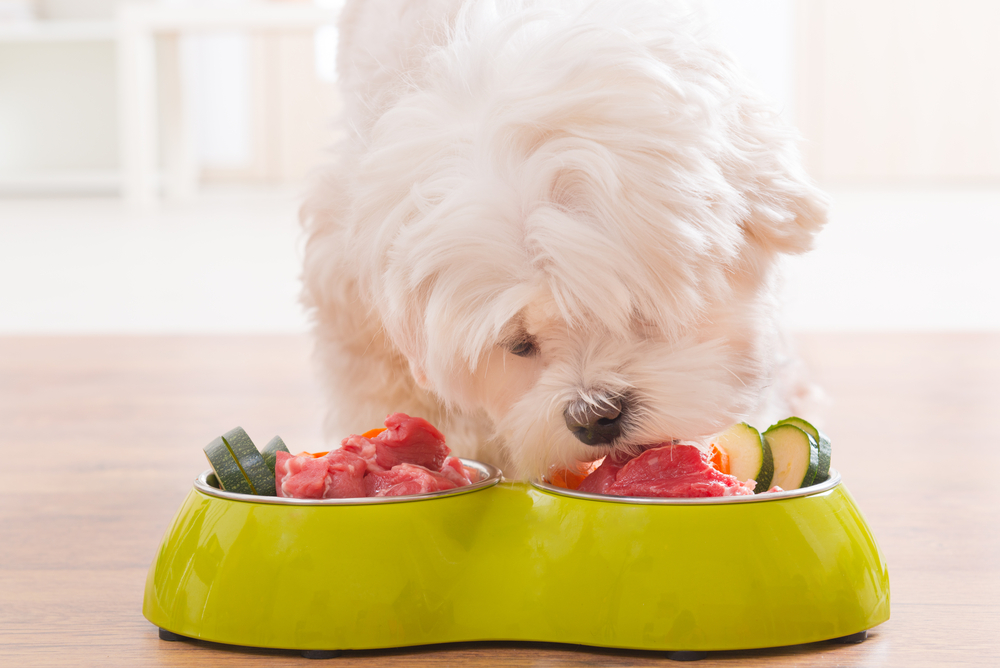Dogs are often mistaken for carnivores that require a meat-heavy diet. However, there are more similarities between a dog’s diet and a human’s diet than you’d think. Like humans, dogs are also omnivores. Dogs benefit from eating the rainbow, which means consuming a diet that includes fruits and vegetables.
Proper diet and nutrition are essential for a dog’s daily functioning. Knowing their nutritional needs will only help you take better care of your dog and promote happy and healthy living.

A Healthy Diet for Dogs
A dog’s nutritional need can be broken down into the six essential nutrients:
- Water
- Proteins
- Fats
- Carbohydrates
- Minerals
- Vitamins
Dogs primarily use proteins and fats as their primary energy source. The amount of protein a dog can consume will depend on a variety of factors, including their age, size, and health condition. In general, an adult dog’s diet should consist of between 18–30% protein. It’s not recommended for dogs to have a diet that exceeds 30% protein. In fact, eating too much protein can cause health complications, including disrupted bone growth and kidney issues.
Contrary to popular belief, dogs are able to process carbohydrates. They have digestive enzymes designed to break down carbohydrates and convert them into energy. Therefore, they can benefit from eating healthy grains and starches, such as barley, oatmeal, sweet potatoes, and rice.
Meat alone is also insufficient to sustain a dog’s health. Many kinds of fruits and vegetables contain vitamins and minerals that dogs rely on for daily bodily functioning. The Association of American Feed Control Officials (AAFCO) has guidelines for essential vitamins and minerals for dogs and how much they must consume.

What’s Inside Dog Food?
Dog food can seem bland and lacking in color, especially when you’re looking at dry kibble. However, high-quality dog food contains a diverse blend of ingredients. They usually contain animal protein, most commonly beef or chicken. When you read the ingredient list, you’ll also find a variety of grains, fruits, and vegetables. A vitamin and mineral supplement mix may be added to ensure the food qualifies as a complete and balanced diet.
How Can Dogs Benefit from Eating the Rainbow?
Eating the rainbow refers to feeding dogs fruits and vegetables of different colors to help boost their nutrient intake. Although dog food contains everything your dog needs for a healthy diet, feeding your dog additional fruits and vegetables can be beneficial for them as long as the fruits and vegetables are fed in moderation.
For example, feeding your dog foods such as blueberries and cranberries can give your dog antioxidants that help prevent diseases. Carrots contain vitamin A and beta-carotene, which help maintain eye health and benefit your dog’s eyesight. Fruits such as apples and bananas provide other nutrients, vitamins, and minerals that benefit your dog’s health.
However, too many fruits and vegetables can also be bad for dogs if fed in excess. Fruits are high in sugar, and consuming too much sugar over time can lead to issues such as obesity and diabetes. Some fruits and vegetables are higher in fats, or in the case of spinach, oxalates which can contribute to kidney stones if eaten in high amounts.
So, it’s important to only feed fruits and vegetables as occasional snacks or treats. Consult a veterinarian if you’re unsure how much and how often to feed your dog fruits and vegetables.
💛 🐶 Speak To a Vet Online From the Comfort of Your Couch!

If you need to speak with a vet but can’t get to one, head over to PangoVet. It’s an online service where you can talk to a vet online and get the personalized advice you need for your pet — all at an affordable price!

Common Fruits and Vegetables Dogs Can Eat
When a dog is eating high-quality dog food, you don’t really have to supplement their diet with other foods. However, your dog can still enjoy eating fruits and vegetables as special snacks and treats. The following fruits and vegetables are fairly popular amongst dogs:
- Apples
- Apricots
- Bananas
- Berries
- Broccoli
- Carrots
- Green beans
- Peas
- Pumpkin
- Spinach
- Sweet potatoes
As a reminder, dogs don’t need added fruits and vegetables to become a regular part of their diet. So, make sure to treat them more like snacks and feed them to your dog in moderation.
If it’s your first time feeding your dog a specific fruit or vegetable, make sure to check that they’re not toxic to dogs beforehand. Avocadoes, grapes, and onions are all examples of foods that are safe for humans to eat but toxic to dogs.

How to Choose the Right Dog Food
Not all dog food is the same. Even if two types of dog food contain the same percentages of protein, fats, and carbohydrates, they can have a different effect on dogs depending on the quality of the ingredients.
The types of ingredients in dog food affect digestibility and the efficiency rates of nutrient absorption. Low-quality ingredients, like animal by-products and artificial flavors, are less digestible for dogs and can even cause them to get sick. Meanwhile, whole food ingredients are often more nutrient-dense and are easier for dogs to digest.
When shopping for new dog food, it’s best to start your search with your veterinarian. Your veterinarian can assess your dog’s physical condition and make tailored recommendations for them.
The general recommendation for dog food is to purchase the highest quality of food that fits into your budget. Make sure to check ingredient lists and stick with dog food that mostly consists of natural, whole-food ingredients. Don’t be fooled by specialty diets with labels such as “grain-free” and “high-protein.” These types of dog food are often much more expensive, but they don’t actually do much to benefit a dog’s health. Most dogs do just fine with eating a regular diet unless they have specific health concerns like food allergies or digestive issues.

Conclusion
Dogs require eating a varied diet. Fortunately, high-quality commercial dog foods already contain a blend of nutritious whole ingredients and meet standards for a complete and balanced meal. However, if you’re feeling inspired to add more color to your dog’s diet, you can introduce your dog to a wide variety of dog-safe fruits and vegetables. While raw produce alone isn’t a sustainable diet for dogs, your dog can certainly enjoy eating fresh fruits and vegetables as tasty and nutritious snacks.
Featured Image Credit: Adri Yadam Nasir, Shutterstock
